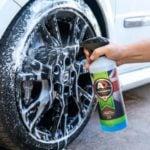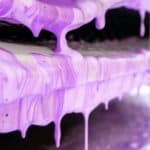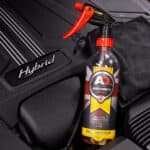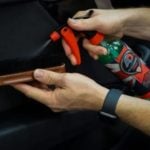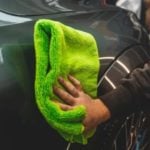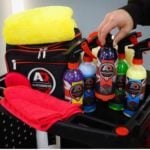How To Clean your Alloy Wheels
Alloy wheels are the most common type of wheels found on the road today and making sure these stylish aluminium rims stay in good condition is vital to the overall appearance of the car. Unfortunately driving every day accumulates brake dust, which just so happens to be one of the worst enemies of alloys, as the intense heat and friction generated by the wheels make these tiny particles of metal highly corrosive. The only way to protect them is by regularly removing them with a suitable wheel cleaner.
Step-by-Step cleaning process
1.We recommend washing your wheels before cleaning the rest of your car, to avoid any brake dust contaminants affecting your cleaning job. Once you have selected your wheel cleaner it’s time to get to work, starting with rinsing the tyres and wheels to loosen any dirt.
2.Apply the wheel cleaner to one wheel at a time ensuring that you cover the alloy in its entirety. Non-acidic formulas will be safe for all-wheel types whether they are polished or clear coated.
3.Using a soft-bristled wheel brush, agitate the cleaner over the surface of the wheel. Choose a brush that fits into all the narrow sections of the alloy for the best results. Soft bristles will loosen grime and brake dust without scratching the wheel’s finish, so ensure you reach all the way through the spokes to clean the front and back of the wheel. Repeat on each wheel.
4.Due to the nature of brake dust and the tiny particles that form it, it can hide just about anywhere, so use a lug nut brush to clean around these fastenings. Make sure that the wheel cleaner doesn’t dry at any point to prevent scratching, reapplying if necessary.
5.Finally, rinse the wheels with a pressure washer ensuring that all remaining rim cleaner is rinsed away. Always dry the alloys using a suitable microfibre towel.
6. Of course if you wish to go further you could add a decontamination step, where you may even remove the wheels to allow better access. This would allow you to remove any contamination such as tar or bonded iron contaminants. These steps can be done with a chemical product such as fallout removers and tar and glue removers or physical techniques using a clay bar.
7. Once all contamination has been removed I would recommend sealing the wheels to protect with a suitable temperature-resistant product. This will make future cleaning much easier.
What products do I use?
There are a number of different types of wheel cleaners on the market, however, they usually fall into three main categories.
Acids
People in the know will usually run a mile at the mention of wheel acid, due mainly due to its association with car washes. This is a little unfair as a dedicated automotive wheel acid can usually be diluted and used regularly will minimal worry. The exceptions to this rule would be delicate or non-standard finish wheels, refurbished wheels, or polished wheels. For the vast majority of people an acidic wheel cleaner would not be needed except on baked-on brake dust and neglected wheels. Acids will offer you a faster way to remove heavy contamination but are less pleasant to use and require caution.
Non Acids
Non-acid wheel cleaners are available in a variety of types. There are liquids, gels, concentrates that can be diluted and ready to use products.
Non-acids are a great way to clean and maintain wheels that are exposed to a “normal” level of road grime and can be used as often as you like with no detrimental effects.
An example would be Britegel, a gel-based wheel cleaner that is acid-free. This is a wheel cleaner that cannot be diluted and is ready to use, its thick gel formula reduces product wastage and allows for a longer dwell time. This product is suitable for all-wheel finishes.
You could also choose Very Cherry Non-Acid, this is a concentrated wheel cleaner allowing for dilution up to 20-1 for general cleaning. It’s a thinner product than Britegel but the dilution rate means it’s much more economical for regular or trade use.
Fallout Removers
Often used as wheel cleaners, Fallout removers like Purple Rain are designed to remove iron particles that are bonded to the wheel at high temperatures during braking. These products react with these particles to break them down and remove them from the surface. This is the bleeding effect you will see when applied. These products will remove regular dirt and grime effectively but this is not their primary purpose, a dedicated wheel cleaner will work more effectively on normal dirt and grime but will usually leave these iron particles behind! By using the Fallout remover after a wheel cleaner you are maximising the effectiveness of this product by ensuring contact with only the bonded iron contamination.
If you are still unsure about the techniques described consider attending one of our training courses.
Back to Basics group courses held monthly.
For one-to-one tuition please get in touch!
Kevin

